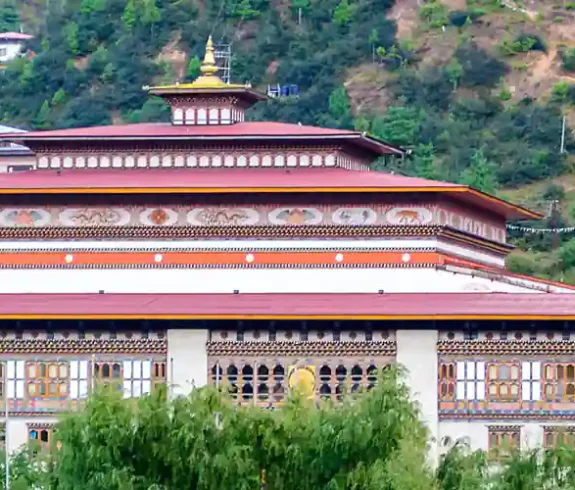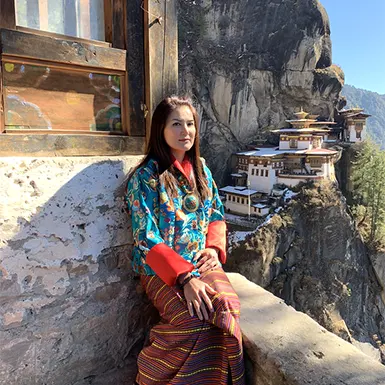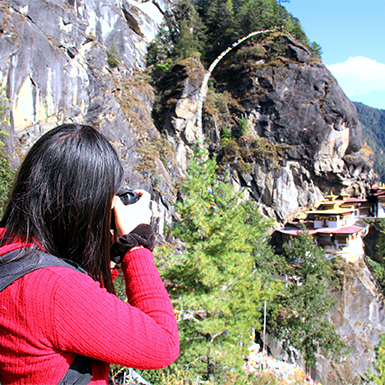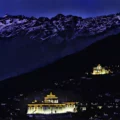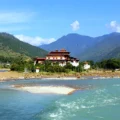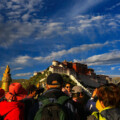Bhutan, known as the mysterious Land of the Thunder Dragon, enchants visitors with its blend of ancient traditions and breathtaking landscapes. This mystical kingdom, tucked away in the Himalayas, offers travelers a cultural tour. When planning your adventure, timing is everything. Discovering the Best Time for Bhutan Tour ensures you experience the full splendor of the country.
Bhutan’s rich heritage, vibrant festivals, and pristine nature make it an attractive destination year-round. However, spring (March to May) and autumn (September to November) are the prime seasons to visit Bhutan. These shoulder seasons boast pleasant weather, clear skies, and vibrant landscapes, making them perfect for exploring this enchanting country.
Prime Time for Your Bhutanese Adventure: Spring and Autumn
For those seeking optimal conditions, spring and autumn reign supreme. During these times, Bhutan’s weather is most agreeable, with mild temperatures and minimal rainfall.
In spring, the valleys explode with colorful rhododendrons, while autumn paints the landscapes in shades of gold and red as rice paddies mature. These seasons also host some of Bhutan’s most significant festivals, adding a deeper layer of cultural immersion to your experience.
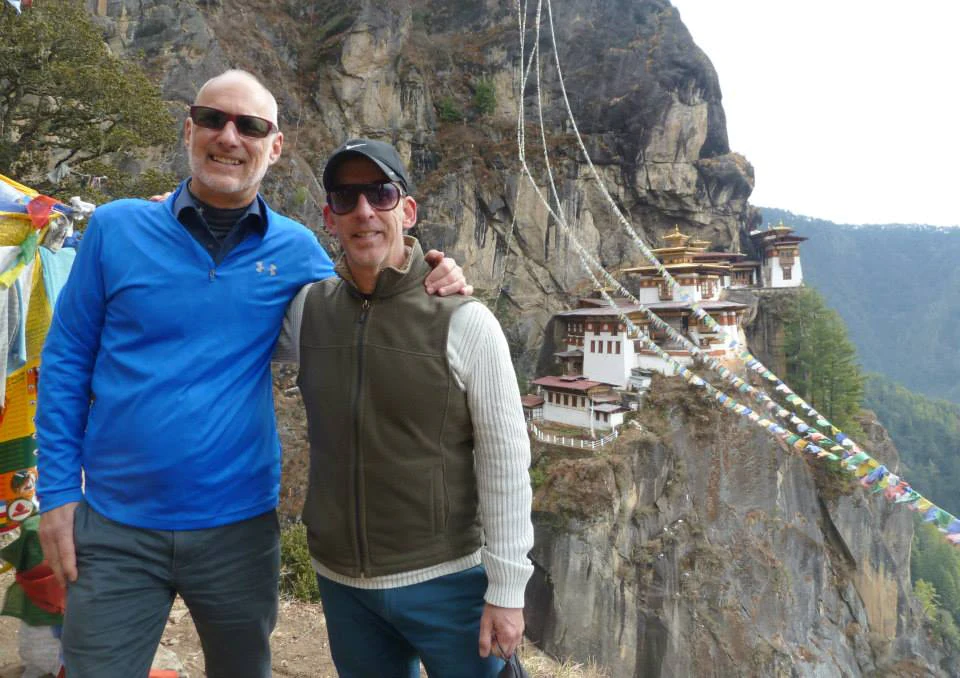
Bhutan’s Seasonal Overview
Bhutan experiences four distinct seasons: Spring (March-May), Summer/Monsoon (June-August), Autumn (September-November), and Winter (December-February). Each season offers unique experiences, ranging from vibrant festivals and blooming flowers to clear skies and lush landscapes. Understanding these seasonal differences will help you decide the Best Time for Bhutan Tour.
Spring (March-May)
Spring greets Bhutan with mild temperatures and clear blue skies, providing an ideal setting for nature enthusiasts. The countryside comes alive with vibrant rhododendrons. During this season, the Paro Tshechu festival showcases traditional Bhutanese dances and cultural performances.
- Weather: The air is fresh, with temperatures spanning from 15°C to 25°C.
- Activities: Trekking, sightseeing, and floral tours are most rewarding.
- Festivals: Experience the cultural spectacle of Paro Tshechu, complete with colorful masks and traditional dances.
Summer/Monsoon (June-August)
Summer introduces the monsoon, cloaking the landscape in lush greenery. Although it brings fewer tourists and potential travel challenges due to heavy rainfall, this quieter season offers a peaceful retreat.
- Weather: Expect warm conditions, from 20°C to 30°C, along with frequent rains.
- Activities: It’s a good time for indoor cultural experiences and enjoying the lush outdoors.
- Travel Tips: Prepare for possible delays; remember to pack waterproof apparel.
Autumn (September-November)
Many recommend Autumn as the Best Time for Bhutan Tour due to its clear skies, pleasant climate, and vibrant foliage color change. Significant festivals such as Thimphu Tshechu make this season culturally enriching.
- Weather: Enjoy the comfortable climate, with temperatures between 15°C and 25°C.
- Activities: Perfect conditions for trekking, cultural excursions, and scenic photography.
- Festivals: Don’t miss Thimphu Tshechu, known for its elaborate rituals and dances.
Winter (December-February)
While winter may be colder, it compensates with magnificent mountain views and clear skies. The season’s tranquility makes it perfect for those seeking a more intimate experience with nature and culture.
- Weather: Brisk, temperatures dropping between -5°C and 10 °C, especially at higher altitudes.
- Activities: Ideal for photography, attending cultural festivals, and mountain gazing.
- Festivals: Witness the vibrant Punakha Dromche, a festival rich with religious ceremonies.
Best Time for Specific Activities in Bhutan
Selecting the Best Time for Bhutan Tour requires understanding the optimal conditions for activities such as trekking, attending festivals, cultural immersion, and photography. Each activity thrives under different seasonal settings, guiding you to choose the most suitable time of year for your visit.
Trekking through Bhutan’s Paradise
Bhutan, a trekker’s paradise, boasts a variety of trails that showcase the country’s diverse landscapes. Thanks to the mild weather and clear skies, spring and autumn are typically the Best Times for a Bhutan Tour.
- Spring Treks (March-May): Experience the vibrant rhododendron blooms that decorate the hillsides. Trails like the Druk Path Trek, the Jomolhari Trek, and the Bumthang Owl Trek are particularly delightful during these months.
- Autumn Treks (September-November): Enjoy the crisp air and stunning Himalayan views. Popular treks during this time include the Snowman Trek, the Laya Gasa Trek, and the Dagala Thousand Lakes Trek.
- Year-Round Treks: For those flexible with dates, the Punakha Winter Trek and the Gangtey Nature Trek are accessible all year, though winter conditions can be challenging.
Festivals: A Cultural Extravaganza
Bhutan’s festivals, or “Tsechus,” offer profound insights into Buddhist culture and traditions. Celebrations occur all year round.
- Paro Tshechu (Spring): A cultural highlight featuring masked dances and sacred rituals in Bhutan’s most attended festivals.
- Thimphu Tshechu (Autumn): Experience the pinnacle of Bhutanese artistry through traditional dances and music in the capital.
- Punakha Drubchen and Tshechu (Winter): These festivals in Punakha commemorate Bhutanese victories over Tibetan invaders with historical reenactments.
Cultural Immersion: Beyond the Festivals
To fully experience Bhutanese culture, you might consider timing your visit with one of the vibrant local festivals.
- During Festivals: Festivals provide vibrant, immersive experiences with full displays of Bhutanese tradition.
- Off-Season Visits: Quieter months allow for deeper interactions with locals, offering a more authentic glimpse into their daily lives and customs.
Photography: Capturing Bhutan’s Essence
Bhutan’s diverse landscapes and cultural vibrancy present endless opportunities for photographers.
- Spring: Capture the fresh bloom of rhododendrons and the verdant landscapes.
- Autumn: Ideal for photographing dramatic mountain backdrops and vivid autumn colors.
- Festivals: Festivals offer dynamic scenes filled with rich colors and cultural expressions.
- Wildlife Photography: The drier months are best for spotting rare species like the snow leopard and the red panda.
Planning Your Best Time for Bhutan Tour: Key Factors to Consider
When planning the Best Time for Bhutan Tour, consider several factors influencing your experience in this enchanting kingdom. Budget, crowd levels, weather patterns, and personal interests are crucial in tailoring your trip for maximum enjoyment.
Budget
Bhutan’s tourism policy includes a minimum daily tariff that covers accommodation, meals, transportation, and a licensed guide. This tariff varies by season:
- High Season (March-May, September-November): The minimum daily tariff increases during peak seasons like spring and autumn due to higher demand and optimal weather conditions.
- Low Season (June-August, December-February): The tariff is lower during monsoon and winter, providing a more budget-friendly option for travelers.
Crowds
Tourist numbers in Bhutan fluctuate throughout the year, impacting the atmosphere and accessibility of attractions:
- High Season: Spring and autumn attract the most tourists, leading to larger crowds at popular sites and festivals. Booking accommodations and tours in advance is essential during these peak times.
- Low Season: Fewer tourists visit during the monsoon and winter, offering a more tranquil and intimate experience with easier access to accommodations and attractions, often at discounted rates.
Weather
Bhutan’s weather varies significantly depending on the season and altitude. Knowing the temperature and rainfall patterns helps in planning activities and packing appropriately.
- Spring (March-May): Bask in mild temperatures (15°C-25°C) and clear skies, perfect for outdoor adventures and vibrant festivals.
- Summer/Monsoon (June-August): Experience heavy rainfall and high humidity, with temperatures from 20°C to 30°C.
- Autumn (September-November): The return of pleasant temperatures (15°C-25°C) and clear skies after the monsoon makes autumn excellent for outdoor exploration.
- Winter (December-February): Colder temperatures (-5°C to 10°C) prevail, especially at higher altitudes, with occasional snowfall.
Personal Interests
Your interests should guide you in choosing the Best Time for Bhutan Tour:
- Festivals: To experience Bhutan’s vibrant festivals, plan your trip around Paro Tshechu (spring) or Thimphu Tshechu (autumn).
- Trekking: Spring and autumn offer the best conditions, with mild temperatures and clear views.
- Cultural Immersion: The off-season provides a quieter and more intimate setting for engaging with local culture.
- Photography: Each season offers unique photographic opportunities, from blooming rhododendrons in spring to snow-capped peaks in winter.
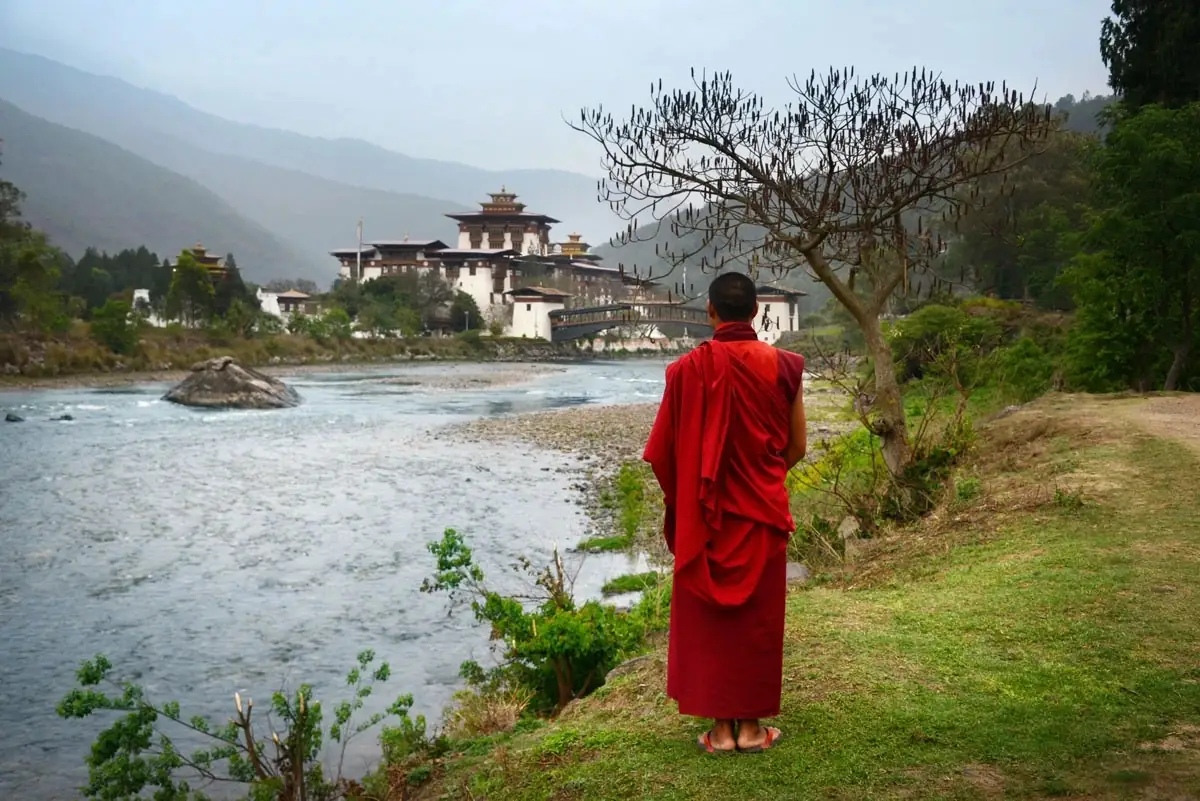
Optimal Times for a Bhutan Tour: A Festival Guide
Exploring Bhutan during its vibrant festivals provides a deep dive into the heart of its culture, making certain times ideal for a visit. If you aim to experience Bhutan’s rich traditions firsthand, aligning your trip with key festivals can enhance your tour. Here’s a detailed guide to the major festivals that define the Best Time for Bhutan Tour.
Spring’s Paro Tshechu: A Sensory Celebration
- Occurrence: Typically falls in March or April, aligned with the Bhutanese lunar calendar.
- Location: Takes place at Paro Dzong.
- Importance: Celebrates Guru Rinpoche‘s life, featuring locals in their finest attire and masked dancers who perform narratives from religious and historical lore.
- Unique Draw: As one of Bhutan’s most attended festivals, Paro Tshechu offers a dynamic and colorful introduction to Bhutanese cultural festivities.
Autumn’s Thimphu Tshechu: Cultural Showcase
- Occurrence: Usually in September or October, following the lunar calendar.
- Location: Hosted at Tashichho Dzong.
- Importance: This festival also honors Guru Rinpoche, bringing the community together to celebrate Bhutanese heritage through dance and music.
- Unique Draw: Set in Bhutan’s capital, Thimphu Tshechu merges traditional and contemporary Bhutanese life, offering spectators a wide array of performances.
Winter’s Punakha Drubchen and Tshechu: Historical Reenactment
- Occurrence: This takes place in February.
- Location: Celebrated at Punakha Dzong.
- Importance: This event features reenactments from a 17th-century battle, celebrating Bhutan’s historical victory over Tibetan forces, complete with religious and heroic masked dances.
- Unique Draw: This festival offers a captivating look at Bhutan’s martial history and spiritual practices, set against the stunning backdrop of Punakha Dzong.
Additional Celebrations
Bhutan’s calendar brims with festivals year-round, providing numerous opportunities for cultural immersion:
- Jambay Lhakhang Drup (Autumn): Known for its unique fire and ceremonial naked dances.
- Haa Summer Festival (Summer): This festival offers insights into the traditional life of Highlanders, including sports, dances, and local delicacies.
- Black-Necked Crane Festival (Winter): This festival celebrates the seasonal arrival of black-necked cranes in the Phobjikha Valley, focusing on conservation and cultural performances.
Strategic Timing for Festival Attendance
The Best Time for Bhutan Tour to enjoy these festivals varies based on the specific events and your cultural interests:
- Spring and Autumn are the prime festival seasons in Bhutan, ideal for those looking to experience the grandeur of Paro and Thimphu Tshechus.
- Winter: Offers a distinctive festival experience with fewer crowds at the Punakha events.
- Year-Round: Smaller festivals provide continuous opportunities for visitors to engage with Bhutanese traditions in a more intimate setting.
Optimal Planning for Your Bhutan Tour: Seasonal Travel Tips
Identifying the Best Time for Bhutan Tour requires careful preparation, especially in terms of what to pack and understanding the travel dynamics across various seasons. This guide provides essential advice to ensure a seamless experience in Bhutan’s stunning landscape.
Seasonal Packing Guide for Bhutan
Spring (March-May)
- Clothing: Opt for layers, including light sweaters and a waterproof jacket, to stay comfortable during cool evenings.
- Footwear: Choose durable, waterproof hiking boots for trekking and comfortable shoes for urban exploration.
- Accessories: Pack sunglasses, sunscreen, and a hat to protect against the sun during the day.
Summer/Monsoon (June-August)
- Clothing: Wear breathable, quick-drying clothes and a durable raincoat or poncho.
- Footwear: Select waterproof boots and sandals that offer good traction.
- Accessories: Carry umbrellas and waterproof bags to safeguard your electronics and documents from rain.
Autumn (September-November)
- Clothing: Dress in layers similar to spring, including a heavier jacket for the cooler weather as the season progresses.
- Footwear: Use comfortable trekking boots, as the trails are generally dry.
- Accessories: Bring thermal layers if you visit higher altitudes where temperatures drop significantly.
Winter (December-February)
- Clothing: To stay warm during Bhutan’s colder months, especially in the early mornings and late evenings, dress in heavy thermal clothing, layer on a down jacket, and accessorize with gloves, scarves, and beanies.
- Footwear: Wear insulated boots designed for snow and icy conditions.
- Accessories: Include moisturizers and lip balms to protect against dry and cold weather.
Navigating Travel Logistics: Peak vs. Off-Peak Seasons
During Peak Seasons (Spring and Autumn)
- Advance Bookings: Secure your accommodations, transport, and guided tours early, as services are in high demand.
- Budget for Higher Costs: Anticipate higher expenses due to the increased demand during these months.
- Manage Festival Crowds: Depending on your crowd preference, align your itinerary to join the festive bustle or choose quieter periods.
During Off-Peak Seasons (Summer and Winter)
- Enjoy Lower Prices: Benefit from reduced rates and special promotions available during these quieter months.
- Weather Preparedness: Adjust your travel plans for weather interruptions, particularly during the monsoon.
- Enhanced Local Interaction: With fewer tourists, experience deeper cultural engagement and more personal interactions with locals.
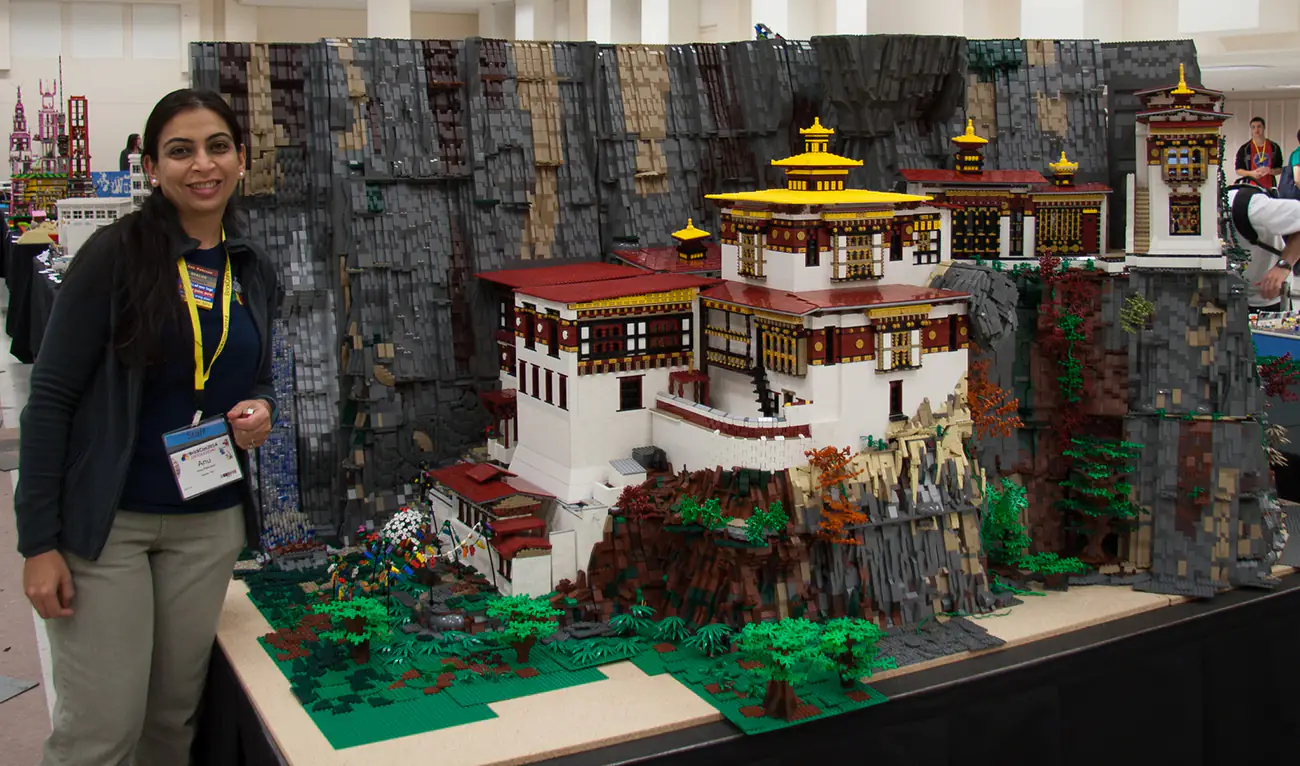
Optimizing Your Bhutan Tour: Beyond Choosing the Right Season
To plan the Best Time for Bhutan Tour, consider more than just seasonal preferences. These additional tips will help you navigate Bhutan’s unique cultural and environmental landscape, ensuring a well-rounded and respectful travel experience.
Visa Requirements and Sustainable Tourism in Bhutan
Bhutan’s commitment to preserving its pristine environment and cultural heritage is evident in its “High Value, Low Impact” tourism policy.
- Visas and Tour Operators: All tourists, except those from India, Bangladesh, and the Maldives, need a visa before entering Bhutan. You can obtain your visa through a licensed Bhutanese tour operator, who will also handle your itinerary and necessary permits.
- Sustainable Development Fee: Bhutan charges a Sustainable Development Fee (SDF) of $100 per night. This fee directly contributes to the country’s development initiatives, such as education, healthcare, and environmental conservation.
- Minimum Daily Tariff: A minimum daily tariff covers accommodation, meals, transportation, a licensed guide, and the SDF. This tariff structure ensures that tourism benefits Bhutan’s people and environment.
- Responsible Travel: Bhutan places a high value on sustainable tourism practices. As a visitor, you can contribute by minimizing waste, conserving energy, and respecting local customs. Support local businesses and choose eco-friendly options whenever possible.
Exploring Bhutan Throughout the Year
Bhutan’s diverse attractions make it a year-round destination with something to offer every season.
- Spring (March-May): Discover the enchanting Paro Valley, hike to the iconic Tiger’s Nest Monastery, and experience the vibrant Paro Tshechu festival firsthand.
- Summer/Monsoon (June-August): Venture into the tranquil Bumthang Valley, known for its monasteries and lush landscapes. Witness the unique cultural traditions of the Haa Summer Festival.
- Autumn (September-November): Explore the bustling capital city of Thimphu, with its markets and impressive dzongs (fortresses). Experience the grandeur of the Thimphu Tshechu, a cultural highlight.
- Winter (December-February): Delve into the spiritual heart of Bhutan in Punakha, home to the magnificent Punakha Dzong and the vibrant Punakha Drubchen festival.
Respecting Local Customs and Etiquette
Showing respect for Bhutanese customs and etiquette is essential for a positive and enriching experience.
- Dress Code: Dress modestly, covering your shoulders and knees, especially when visiting dzongs and religious sites.
- Footwear: Remove your shoes before entering temples, monasteries, and homes.
- Photography: Always seek permission before photographing individuals, especially monks and nuns, as a sign of respect.
- Public Displays of Affection: Bhutanese culture is conservative, so avoid public displays of affection.
- Language: Learning a few basic phrases in Dzongkha, the national language, demonstrates respect and can enhance your interactions with locals.
Your Dream Bhutan Adventure: Choosing the Perfect Time
Bhutan, a land steeped in mystery and vibrant traditions, nestled high in the Himalayas, offers a unique experience tailored to every traveler. Deciding the best time for a Bhutan tour depends entirely on your preferences and what you desire to experience in this enchanting kingdom.
Critical Points for Planning Your Best Time for Bhutan Tour
- Spring and Autumn: These seasons typically offer the most agreeable weather, with mild temperatures and clear skies ideal for outdoor adventures and vibrant festivals. If you prefer moderate temperatures and vibrant landscapes, this is the Best Time for Bhutan Tour.
- Summer/Monsoon: If lush greenery and a peaceful ambiance appeal to you, embrace the monsoon season while acknowledging potential travel disruptions. It is the best time to visit Bhutan if you seek tranquility and fewer crowds.
- Winter: For those who crave the drama of snow-capped peaks and intimate cultural festivals, winter might be your perfect match, though warm clothes are a must. Many consider winter the Best Time for Bhutan Tour because it offers a unique perspective on the country’s natural beauty.
- Personalized Itinerary: Craft your Bhutan tour around your passions. Bhutan caters to every interest throughout the year, whether you’re interested in trekking, festivals, cultural immersion, or photography.
- Festival Fever: If you want to experience the heart of Bhutanese culture, plan your trip around significant festivals like Paro Tshechu or Thimphu Tshechu. These festivals offer a glimpse into Bhutan’s rich traditions and are a must-see for anyone considering the Best Time for Bhutan Tour.
- Practical Preparation: Ensure a smooth tour by researching visa requirements, respecting Bhutan’s sustainable tourism policy, and embracing local customs. Being prepared will help you maximize your experience and make the most of the Best Time for Bhutan Tour.
Tailoring Your Bhutan Experience
Ultimately, the best time for a Bhutan tour is the time that resonates with you. Whether you seek adventure, cultural immersion, spiritual awakening, or a serene escape, Bhutan welcomes you with open arms.
